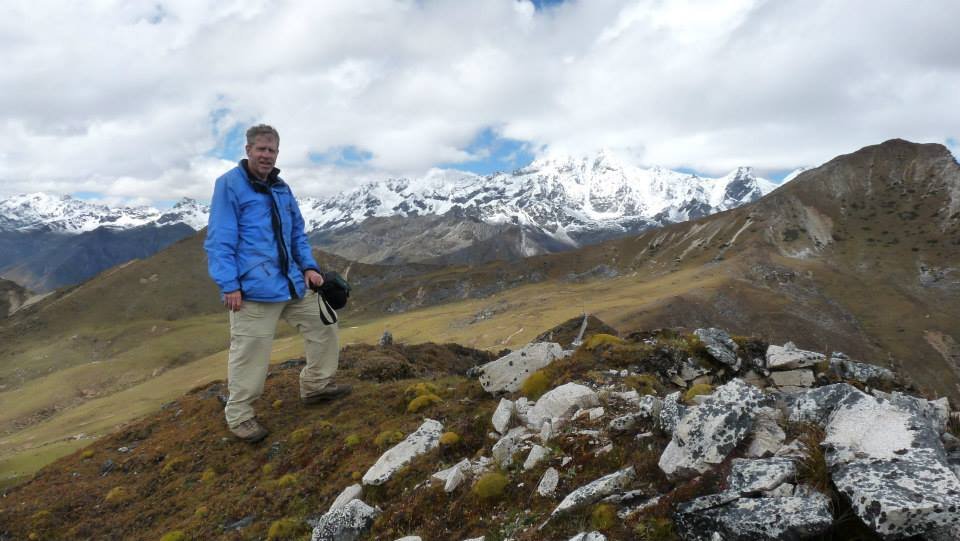
The Snowman Trek
Many people claim that the grueling 24-day Snowman Trek (or Lunana Trek) in the small Himalayan country of Bhutan is the toughest long walk in the world and they might be right. It’s certainly a strong contender for world’s toughest trek. The Snowman can be bitterly cold and many of the daily walks are extraordinarily long and hard, especially in the rarely visited Lunana Valley. There are also eight mountain passes of over 16,000 feet (4,877 metres) to cross. To complete this trek you must naturally acclimatize very well or consider taking Diamox, which basically kick starts the acclimatization process. Being very fit is also absolutely necessary. In some sections of the walk you go over high passes through the snow and rain day-after-day on very rough and muddy trails that really test your mettle. It certainly tested mine.
In late 2007 I was ready to retire early from my job as an Edmonton Journal reporter and was looking for the best, most exotic and hardest long walk I could find to celebrate. The first time I read about the Snowman Trek I knew instantly I had to do it. Sure, it was intimidating but that is part of its charm. It sounded exactly like the kind of travelling challenge I have often taken on and the idea of a month in Bhutan with endless days of magnificent mountain views, Buddhist shrines and interactions with some of the world’s friendliest people was irresistible to me.
In 1972 the King of Bhutan declared “Gross National Happiness is more important than Gross National Product,” which became a part of the Bhutanese constitution two months before I arrived. The King got it right.
How tough is the Snowman Trek? Bart Jordans, author of the excellent Cicerone Guide to the Treks of Bhutan, notes, “more people have reached the summit of Everest than have successfully completed the Lunana Trek.” The success rate of reaching the Lunana Valley is approximately 50 per cent but the best organized companies, who wisely head out on the Snowman in the last 10 days of September, usually get all their clients into and through Lunana, even though it is situated in the remote northwest corner of one of the most remote countries on earth. Sometimes very heavy snowfalls make it impossible for the yaks, who carry huge loads, to make it over the 16,465 foot (4,940 metre) Karakucha La (‘La’ means mountain pass) into Lunana, forcing groups to visit more accessible areas of the country.
There are very few roads in Bhutan and the closest one is almost a week’s walk away from Lunana. It is definitely not the place to experience a medical emergency because it usually takes two or three days to get a rescue helicopter there from India.
The scariest thing about the Snowman is the cost. It is mostly set by the Bhutanese government, which charges $250 a day. My trek with Canadian Himalayan Expeditions cost about $8,000 in 2008 and today the price is around $10,000. I loved Bhutan, but I won’t be going back.
After many months of long runs of eight-to-ten miles every other day and other rigorous exercise I boarded the Bhutanese Druk Air plane on September 21, 2008 from Bangkok to Paro, the country’s only airport. I met our US trek leader Kevin Grange in Bangkok and the eight other trekkers, all male. It’s always better to have the civilizing effect of women on this kind of journey. We settled in well, however, and the following day hiked up to the stunning Tiger’s Nest monastery.

The next day we got a ride to the trailhead and started walking at last. That first day was quite long if relatively easy but the second was a very, very tough, up-and-down 22 kms through constant rain over a trail which was like a sea of mud. We struggled through piles of huge, uneven and slippery rocks covering the entire path. I fell four times, hyper-extending both knees at least once, but was not seriously hurt, only frustrated.
On one rickety wooden bridge my right foot went right through the rotten wood up to mid-calf with a raging river (the Paro Chhu) just below. I was momentarily terrified I would lose my irreplaceable boot, but it was on very tight and with a little help I was able to carefully pull and twist my leg out with my boot still on. I had worn those boots every day for six months so my feet would adjust to them before the trek and within a few days I was the only trekker without a blister. I was wet and exhausted when we reached camp after nine difficult hours of plodding along and reminded myself that this was the challenge I asked for. If this was only the second day I wondered what the Hell was ahead.
The next day was wonderful. It was mostly dry and I happily walked ahead of everyone else until I reached a military checkpoint, run by Bhutanese Captain Dorge, whose job was mainly to watch out for smugglers crossing the nearby border with Tibet. I was stunned to see his little house had a satellite dish with a TV inside. Captain Dorge invited me to share some butter tea with him and he explained that he was able to get the BBC, ESPN, CNN etc. on his television, but mostly loved watching English Premier League football, especially his beloved Liverpool FC. As a huge fan myself we had a delightful conversation about our favourite club as we sipped cups of tea. It appears that there are LiverpooI football supporters everywhere.
I then headed off with a few members of our trekking group and later our cooking staff made lunch in the home of a friendly family of four who owned 25 yaks and made lots of delicious yak cheese, which we happily sampled. Later we reached our spectacular campsite, Jangothang, at 13,260 feet (4,044 metres), a 5,500 foot elevation gain in three days since we left Paro. The camp was dwarfed by the nearby mountain, Jhomolhari, at 23,995 feet (7,315 metres), and perched on the border of Tibet and Bhutan. This is why I came on this journey. To walk away from the crowds, experience wild and beautiful country, encounter friendly locals and gain some insight into a unique and exotic culture and maybe into myself.
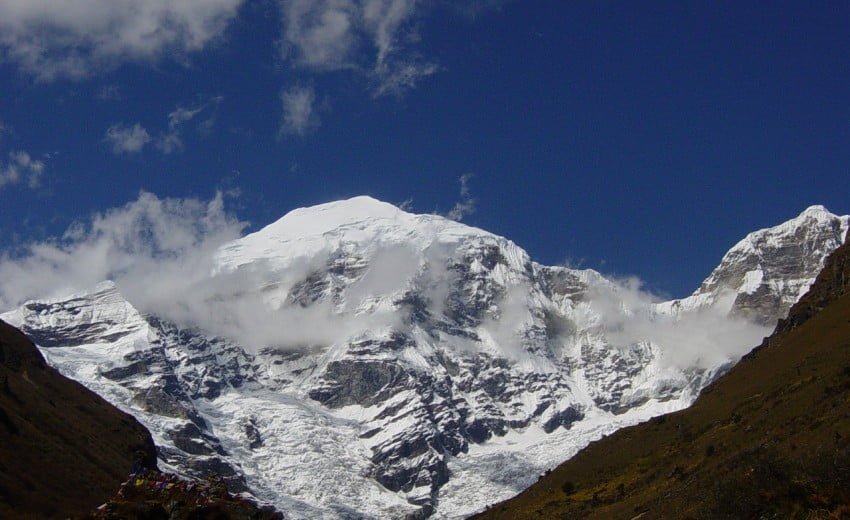
Following the ‘walk high, sleep low’ maxim we took an acclimatization hike the next day and climbed a thousand feet to a meadow where we saw a large herd of yaks, some bharal (Himalayan blue sheep) and three marmots in what was clearly snow leopard country. Later we descended to camp and watched the horsemen from our trek play Dego for hours against the horsemen from an Australian company. Dego is a popular local game similar to horseshoes but played with stones. The players toss stones underhand at a stick stuck in the ground. The closest stone wins.
Karma, our head horseman, was the embodiment of everything I loved about the Bhutanese people. He was strong, very experienced, kind and seemed uniquely at peace with himself and his rugged life. He treated his mules and horses gently. I watched fascinated one morning as he carefully prepared his animals for a day on trek. Karma was constantly singing a song, whistling a tune, talking to the horses and smiling. Our guide Tenzing said he was singing a Buddhist song praising the mountains and rivers.
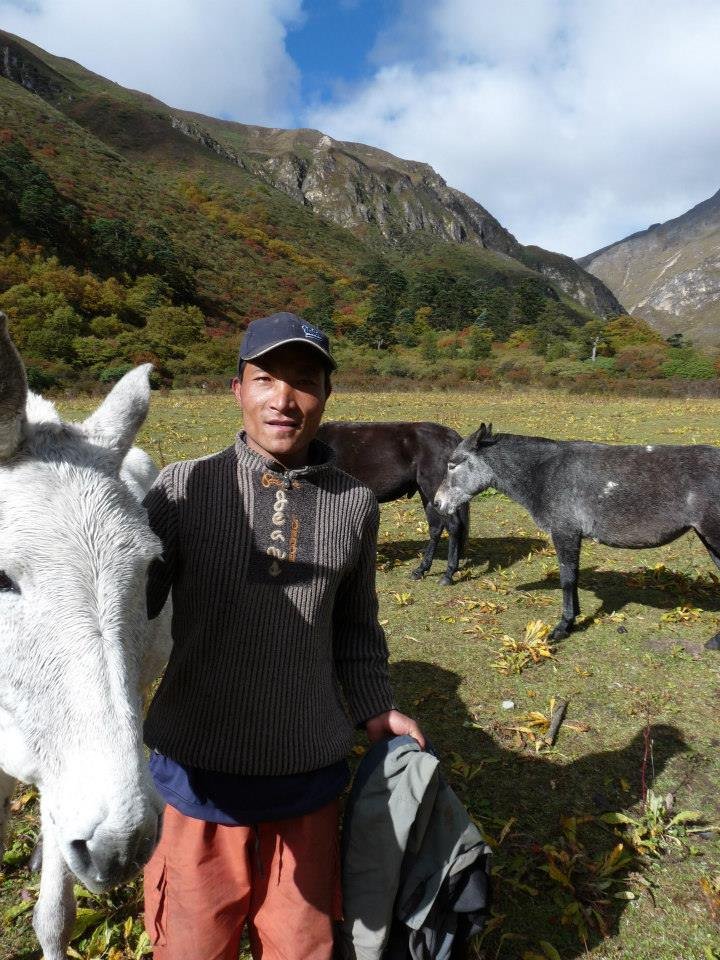
After the horses had spent the night chewing what grass they could find Karma put blankets and ropes on them and strapped a food bag on each as they prepared to carry our tents and duffel bags over yet another 16,000 foot pass to the next campsite.
Karma is the ultimate Bhutanese horse whisperer, and the other, younger horsemen watched carefully, listening and learning from him. We would head off first but always see them pass by when we stopped for lunch, skipping theirs so the camp was all set-up when we arrived at the end of the day’s walk. We could hear Karma singing away happily as he passed by.
The life of a Bhutanese horseman, and their horses, is hard. One day we were walking to our campsite as they led their horses and mules on a trail far above us. Suddenly we heard a shout and looked up to see a horse cartwheeling down the very steep hill, head over heels, and breaking his neck. Everyone raced to the horse’s body and one of our trekkers, Jon Hinds, tried to give mouth-to-mouth resuscitation to the dying animal, but it couldn’t be saved. The horsemen earn little money so we all chipped in generously to lessen his loss.
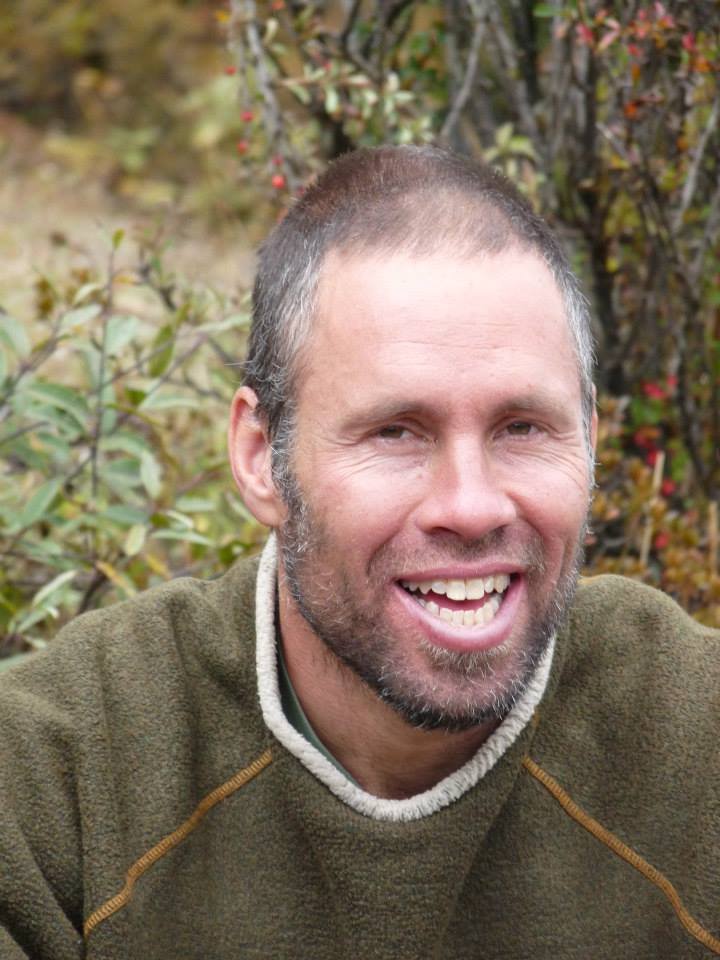
The Bhutanese government has a rule that trekking groups and campers may not start a bonfire at night, but one evening the crew told us they were collecting deadwood for a massive camp fire. Later we brought our little chairs up to the edge of the roaring fire, drank our chai and had a wonderful dinner. Soon the horsemen, led by Karma, began to sing Bhutanese folk songs and it was pure magic. For the first night on the trek the sky was absolutely clear and a great blanket of stars twinkled above us. I thought about how far we had all come in the first week. Not so long before we were leading our ordinary lives, completely incapable of imagining the experience of a night like this.
One of the horsemen wrapped his arms around Karma from behind as he led his friends through one song after another. As he sang beautifully they made a chorus, singing with their butts turned to us, as they warmed their upper bodies on the fire. They challenged us to sing that night and we did our humble best. I finally stood up and purposely wandered away from the campfire, far enough so that I could get an even better view of the magnificence of the sky above us, but close enough so that I could still hear the wonderful singing. Not for the first time, I wondered if I could ever possibly re-create for my friends a sense of what this exotic experience was like and why I go on these trips. My motto is “Do not sleepwalk through life.” Do the most interesting and challenging things you can think of and afford. You won’t regret it.
Later Karma sat down next to me with our Bhutanese trek leader, Khandu, beside him, and they harmonized perfectly on a series of local folk songs. I believe I could have listened to them all night long, but morning comes quickly and we had another high pass, the Jare La, to cross the next day. Everyone left the campfire with a smile on their face.
The next morning we had our best ever encounter with a local family who welcomed us into their home. The 85-year-old Bhutanese woman’s eyes shone with delight and amazement as she held the strange foreign object, a digital camera, in her wizened hands. Sitting in the home’s only chair, in the place of honour beside the small stove, she twirled her Buddhist prayer wheel and watched bemused as the group of western trekkers ate lunch prepared by our cook, Yeshe. To her delight our trekkers then played with her three beautiful young, great-grandsons. She glanced in awe at the magical image on the camera. It displayed the young boys, herself, and Jon Hinds, the hulking American personal trainer. They were all smiling broadly.
The trekkers were there because we asked the team leaders to arrange such experiences as often as possible, so we could be welcomed into the homes of ordinary villagers and interact with them, and although this was not the first time that it occurred, it was definitely the best. My fellow trekkers were great, playing with the three delightful young boys, and it was clear that everyone thoroughly enjoyed the experience. Jon, in particular, was magic with the kids and his pal, Pete, who is also phenomenally fit and strong, thrilled them by walking around the room on his hands. Later, after I left, the boys entertained their guests by singing six songs to enthusiastic applause. Finally, everyone enjoyed a dessert prepared by our cooks. Obviously, I should have stayed longer, a mistake I would not make again. At our campsite I watched the local men practicing Bhutan’s national sport, archery.
Not that much has apparently changed in roadless rural Bhutan since 1923, when the old woman was born in the tiny village of Chebisa in the remote north of the rarely visited Himalayan country of just over 800,000 people, about 10 per cent larger than Switzerland. This very pleasant cultural and multi-generational encounter was one of many opportunities we had to mingle with the ordinary people of Bhutan.
One big positive about Bhutan is that most people, especially the younger ones, speak English well because it is the language of instruction in many schools. In addition, government documents and road signs are written in both English and Dzonkha, a language with roots in Tibet. Even the national newspaper, Kuenkel, is published in both languages, plus Nepali. This enabled us to visit a school and talk to young students. Earlier that day in Lingshi, we talked to two young girl students who asked in English where we were heading to and I showed them on the map in my trekking guide. This was the same school the three young boys we met in their home attended, and lived at during the week. They made the three-hour walk on Mondays and back on Saturdays.
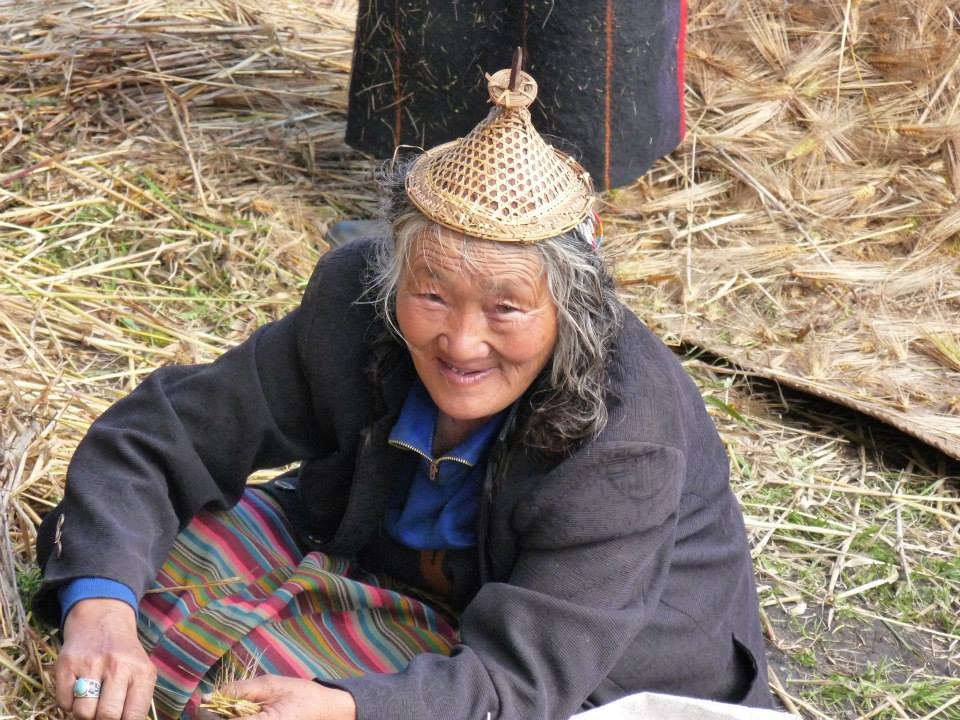
We soon reached Laya, the biggest village on our journey, where we said goodbye to Karma and the other horsemen who were replaced by men with yaks, which are needed to make it over the high passes that lead to the Lunana Valley. A few days later we trudged over a very high pass and then down nearly 5,000 feet to the valley floor. We began our descent in a blizzard and ended it in the pouring rain. But we had reached Lunana, so everyone was happy.

We awoke to a lovely sunny day with piercing blue skies and views of a beautiful nearby mountain. Top that off with a cracking breakfast of granola, toast and Lunana pancakes and we were all in high spirits. We were also surrounded by lovely waterfalls as we trudged on muddy trails through a forest before a very steep climb up to the village of Woche, our first in Lunana. The villagers were very friendly and we joked and laughed a lot together for about an hour before heading up to our campsite for the best meal of the entire trek, which led to a standing ovation for our cook. The next day we walked to Lhedi where we visited the only school in Lunana and did our best to answer good questions from the young students who spoke English well.

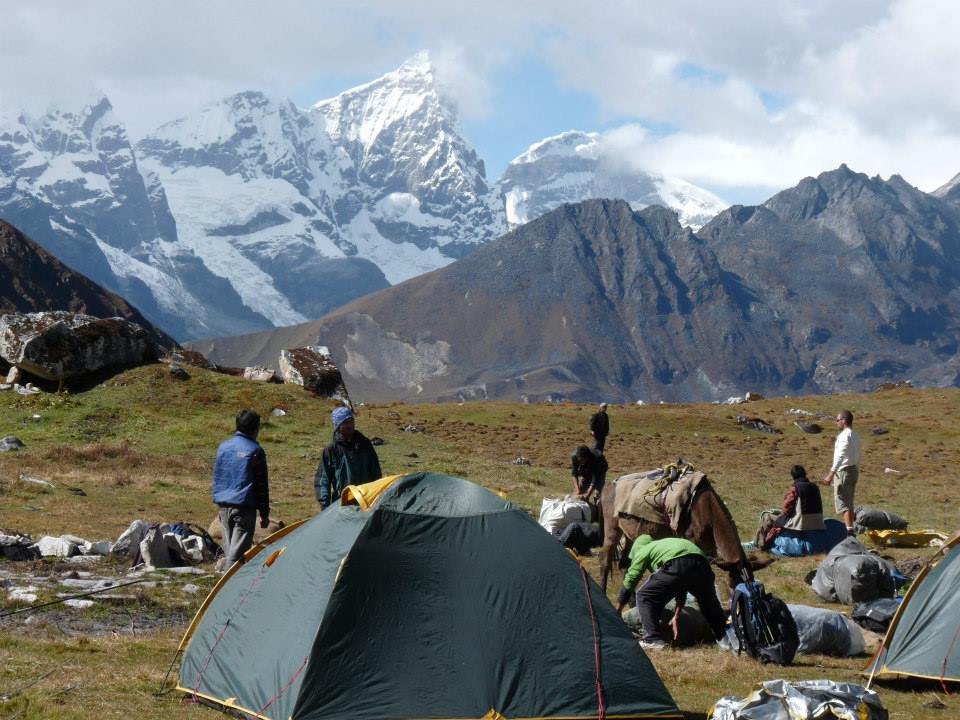
We got a real surprise in Thanza, the last village in Lunana, when we learned that the yak men had gone on strike! There were six days left in the trek including the highest pass of the entire walk and we couldn’t do it without yaks. I am always suspicious of labour disputes when you only hear from one side, but we were told the yak men claimed their animals were tired and demanded triple pay for the last six days, then refused it when it was offered. Who knows the truth? Finally a deal was made because Yeshe knew some local men with yaks. The strikers agreed to take us for one more day if the company paid for five extra horsemen. Then Yeshe’s friends would transport our gear for the last five days, which they did.
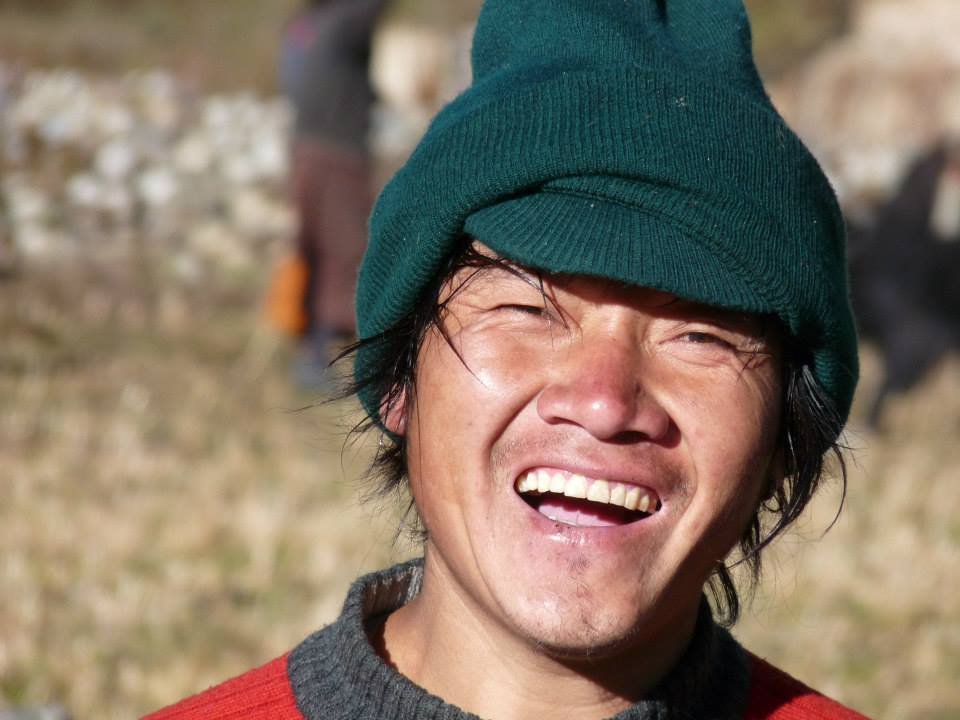

A few days later I was experiencing some stomach problems and general exhaustion as we crossed the Rinchen Zoe La at 17,470 feet but marched on until we arrived at a real road the next day and celebrated a totally successful trip. We spent a few days visiting Buddhist shrines, and the capital, Thimpu, which features the only stop light in Bhutan. It was time to leave and the other trekkers, who were headed home, were shocked to discover I wasn’t finished walking yet.
I said goodbye, hopped on a plane to Kathmandu and a few days later headed out on my 60th birthday with my Nepali guide/porter, Gelu Sherpa, for three fabulous weeks of walking the famous Annapurna Circuit and the Annapurna Sanctuary, two of the best treks in the world, before heading home with a smile on my face.
Read about my adventures in Annapurna here.

One thought on “The Snowman Trek”
Beautiful photos. You have a wonderful post,, Those are beautiful pictures of your trip. there is no words to describe those beautiful places.. what a fantastic blog..